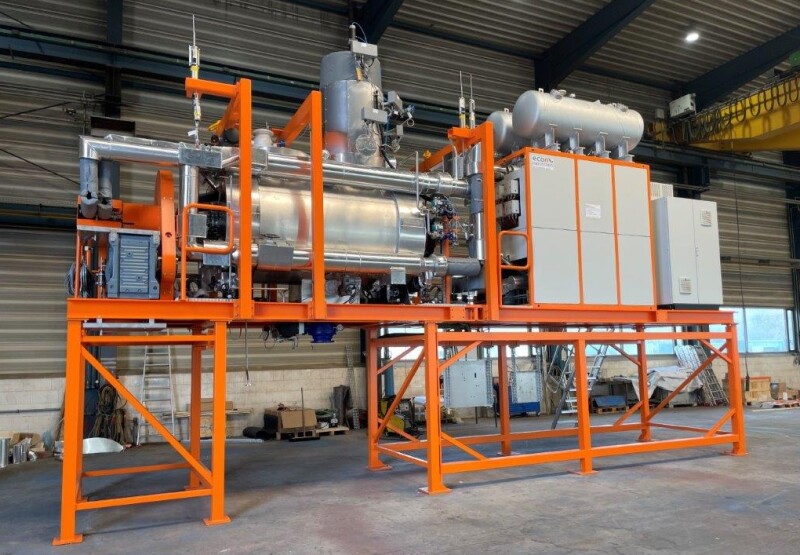One of the more pressing challenges for the oil and gas industry is the management of waste containing naturally occurring radioactive material (NORM) or technologically enhanced NORM (TENORM). The exploration and extraction operations of oil and gas are frequently executed in subsurface formations that contain natural radionuclides such as radium-226, radium-228, radon-222, lead-210, and potassium-40. The natural radioactivity present in oil and gas extraction sites can be significantly enhanced by technological and human activities, creating TENORM waste. TENORM is caused by the concentration and accumulation of natural occurring radionuclides at the internal surfaces of equipment, producing waste such as scale and sludge formations in pipes. In addition, NORM is concentrated in the produced byproducts from oil extraction such as water.
Radionuclides present in oily wastes often form complex compounds, leading to different forms of sedimentation such as sulfates, silicates, carbonates. In several cases, mercury is also a major contaminant. This mixture of contaminants poses challenges for transport, treatment, and safe final disposal. As a result, NORM waste management solutions apart from temporary storage facilities are limited.
At the 2022 International Conference on Management of NORM in Industry, one of the main challenges for the oil and gas industry was reported as the lack of waste disposal options in several countries. Several consequences may arise with increasing NORM waste quantities, such as space limitations at disposal sites and increasing operational costs. Volume reduction techniques such as gravitational separation, extraction and enzyme pre-treatment, in-situ flocculation, physical separation, and chemical treatment have been applied to NORM to reduce the costs associated with the disposal of the waste.
Disposal techniques involving deep well injection such as slurry fracture injection, subfracture injection, or cavern well injection have been investigated and applied in several countries. These injection techniques have several limitations, however, such as the requirement of a distinct geological formation, the risks associated with leaks or earthquakes, and the difficulty of injecting slurries and pasty materials because because of its ability to clog wells.
The treatment option investigated in this paper involves the removal of water and oil present in the NORM wastes, followed by an optional chemical immobilization of the remaining solids. The volume reduction of NORM waste with indirectly heated vacuum distillation (Fig. 1) has been overlooked in research as a viable treatment option. In comparison with the previously mentioned treatment techniques, the drying process of the material has two main benefits: the reduction of NORM waste volume and the deoiling of the material, which is required to for effective curing and, therefore, long-time stable immobilization with chemical binders. Because of the dry solid residue from the process of indirectly heated vacuum distillation, reinjection can be evaluated more precisely in the future. With the dry and oil-free material, good suspensions can be produced, which form the basis for successful reinjection.
This paper describes several key assessment factors that will allow a more detailed understanding of the benefits of indirectly heated vacuum distillation processing for NORM waste treatment. The technological process description, the measured remaining radioactive waste, and the safe disposal of the solid material are explained. The objective of the paper is to assess the feasibility of the separation of oil and water from the solid radioactive waste through an indirect heated vacuum distillation technology. The indirect heated vacuum distillation technology is used to evaporate water, oil, and mercury from the waste matrix. As relevant radionuclides are mostly present in the solids, the process principle is designed to ensure that there is no carryover of solids into the vapor treatment system, which is the major difference from other thermal treatment options. The results of the proof of performance tests conducted also are presented in this paper.
SPE members can download the complete paper from SPE’s Health, Safety, Environment, and Sustainability Technical Discipline page for free from 9 to 22 May.

